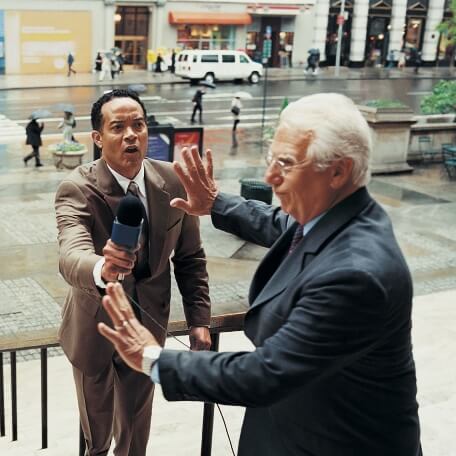The Future of Work: Employees And Employers Speak
How can working environments impact energy levels and enthusiasm to get the job done?

Flore Pradère, research director at JLL, talks about the ways managers can encourage employees to become more productive through subtle improvements to the working environment.
1. Is there a difference in the way employees and employers perceive the work environment?
CRE leaders tend to focus more on creativity and inspiration – particularly when generating new ideas to boost performance. When asked about the most attractive organisations for the future, almost eight out of ten believe that people will aspire to be “intrapreneurs” or work in a start-up spirit in a large company. This is actually the aspiration of only three employees out of 10.
On the other hand, employees primarily ask for fundamental managerial healthiness - made of recognition, kindness, the right to be happy at work and also in their work. Hence making the human leadership the prerequisite for any entrepreneurial dynamic.
2. How can offices be designed to ensure that the diverse range of interests and wants are reflected in the real estate portfolio?
No two people are the same, and no two people have identical wants and needs. This is particularly true when it comes to employees, where the bigger the team, the greater number of wants and needs to be accommodated.
It is difficult to ensure that everyone’s interests are reflected, but it’s not impossible. The solution is to provide choice. In other words:
• Give employees more choice over what they work on, as well as how, when, and where they work;
• Provide them with a range of flexible and alternative workspaces to choose from as they see fit;
• Treat them as individuals, understanding their unique needs and tailor their experience
Think of it another way, offices have traditionally contained people at boring desks or in formal, bland meeting rooms. If we recognise that offices are more than just bricks and mortar by embodying the heart and soul of an organisation we will ensure that our workspaces reflect the diversity of the human experience.
3. Are the employees attracted to bean bags, table tennis tables and hot desking?
Deciding whether or not to embrace wacky working initiatives is a key question many employers are asking themselves. In fact, this was a key question in our latest report, ‘Workplace – powered by Human Experience’, which was answered by over 7,300 employees across 12 countries. It was also the question we recently asked more than 130 corporate real estate leaders at the annual CoreNet conference.
Reviewed together, the research delves into how both employees and employers feel about their offices and how keen both groups are to embrace workplace innovation.
Some 40% of the employees surveyed feel entirely ready to embrace the new ways of working, trading their current workstation for an open-space or a hot-desk environment in exchange for an access to innovative spaces, but only 26% of employers think their teams are ready for change.
But it’s about more than just peppering a breakout space with bean-bags or installing a novelty slide. Rather, it’s about the whole experience of the working day and how we interact with our environment.
With this in mind, only 12% of employees thought their offices should promote games, whilst 69% are asking for an environment that promotes happiness at work, inspiration (43%), a sense of belonging and community (31%).
So step away from the ping-pong table! Employees know what they want: inspiring and innovative spaces, be it an incubator pod, breakout space, hot desk environment or coworking structure.
4. What practical steps can employers take to ensure their offices are productive?
I prefer talking about performance rather than productivity. Performance is closely linked to engagement: going the extra mile, getting out of the comfort zone. Engagement boosts the sense of belonging, motivation and cross learning.
Our research reveals that fewer than half of employees across the globe feel fully engaged with the organisation they work for. Company commitment correlates with employees’ access to innovative spaces and to staff’s overall satisfaction towards their workplace
This means that the work environment must be diverse, versatile and renewed. Spaces to breathe, create and collaborate – alongside sustained opportunities for learning and excelling at work – enable organisations to build trust and transparency in the workplace, boosting performance and ensuring people have a sense of purpose at work.
5. As an employer, what can you do to engage your employees?
Fostering a sense of commitment is key to facilitating organisational change. At work, people need to feel they have a purpose. Operating in a nurturing environment within a business that enables them to work on both their personal and professional development.
People like to feel they are part of something bigger, connecting the dots between individual roles and the goals of the organisation. This starts with our office spaces.
Dense, overcrowded workspaces stifle feelings of individuality, and engagement further still. In fact, our research found that open plan offices with a density of fewer than 50 people per shared zone allow people to work effectively. Above that, effectiveness drastically drops.
Bearing this in mind, an ideal workplace should contain a mix of collaborative spaces and support services to drive employee effectiveness.
As a starting point, business should look to ensure their office layouts are spacious, bright and with plenty of spaces – even if just an onsite café – for employees to escape to.
6. How important is employee happiness?
Employers have no choice but to address those raising needs. Happiness at work cannot be overlooked anymore. It is a strong – and totally reasonable - expectation from employees today. It is perceived as the number one ingredient for a unique experience at work by employees, closely followed by recognition.
Employees want to be looked after! Our research shows that 87% of them also support the idea of a Chief Happiness Officer (CHO) in their company to oversee their day-to-day feelings.
7. How can you make sure your employees are ready for change?
Get your employees on board! Listen to them. Inspire them. Share your vision with them. Show them what a key asset they are for the organisation. Give them a role to play in the new human experience journey. Bet on human leadership by placing people at the core of your strategy and this will help them embrace change and new initiatives.
8. Is a Chief Happiness Officer a fad or is it the key to promoting employee happiness?
Appointing a CHO could not only help ensure that employees’ feelings are carefully monitored and supported day-to-day, but would also send a powerful message itself that staff really are the beating heart of an organisation and greatly valued by management.
Of course, appointing a CHO is not the only solution. Businesses still need to ensure, for example, that their offices are designed in a way to promoting effective working and collaboration. Put simply, a CHO may be a useful tool in boosting employee happiness, but it is not the only solution.
9. What advice would you give to businesses across all budgets?
Whatever your budget for workplace innovation, I think the most important thing is the ethos you put behind your project: the workplace revolution must be supported by an authentic managerial revolution. You cannot run the first revolution alone.
Trust, kindness and the ability to take initiatives constitute the basic ground for an innovative work environment. The C-suite must promote an inspiring vision and management must be exemplary in leading the way.
Change management should not be neglected and will ensure that all the evolutions you bring to your workplace truly contribute to a more engaged, empowered and accomplished workforce! That is what human experience is all about.
Thanks for signing up to Minutehack alerts.
Brilliant editorials heading your way soon.
Okay, Thanks!


